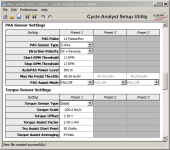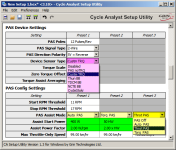r3volved said:
CA works well with the GNG mid drive.
I didn't have any trouble just following the manual directions and setting up.
Good to hear.

speedmd said:
Looking to possibly add a CA v3 to my GNG mid drive bike which is running 18s lipo and a Sunwin 72v 1500watt controller. Hoping to tame the throttle response a bit as well as add a bunch of features to my bare bones build such as thermal roll back and battery - current features. I am a bit lost in all the thread searches and wondering if anyone is up to speed with it in a similar setup and can share some basic info I should know before jumping in.
As r3volved indicated, the Guide should give you what you need.
The primary obstacle in your case is hooking up the CA to your controller. The
Guide describes a simple method using an external shunt that doesn't require cracking the case - see:
"Appendix D. Adding a CA-DP Connector to a Generic Controller". There are ES threads for hooking the connector into the controller internals and sharing the controller internal shunt (for instance
this thread) - both techniques yield identical capabilities. If you use this second technique and don't know the controller shunt value, you can use one of the techniques in the Guide section
"Appendix A. Calibrating the Cycle Analyst RShunt Value" to calibrate your CA.
Once the CA-DP connector situation is addressed, the installation should go by the book.
Ramping Hints:
Since you have a freewheel in the drive, you will be setting this up like a gearmotor. The
FastRate setting determines the ramp rate until enough load is detected to switch to the slower
UpRate. You should tune using
ThrO->FastThrsh=0 to start to get the ramping the way you like. Then you can run up your drive unloaded on a stand and note the current. Try setting
ThrO->FastThrsh to about 150% of that value to start. When you are at speed, this will let the motor run up to speed pretty quickly and then back off the rate as soon as the freewheel engages. This is a little fussy to set up but improves response quite a bit.
To simplify the ramping adjustments, I recommend you download the 3.1 beta firmware which has visual 'ramping flags' on the Diagnostics screen. These are very helpful in figuring out what the heck the CA is really doing... In any case - you want to order a programming cable with your CA.




